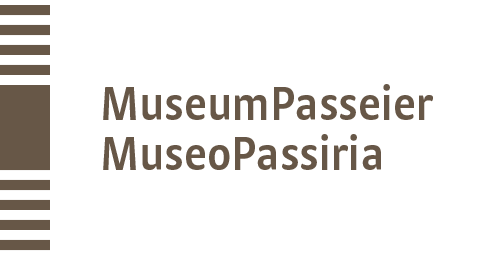
Freilicht
Area all’aperto
Open air
Das Freigelände lädt zum Verweilen ein.
Hier gibt es einen für das alte Passeier typischen Haufenhof. Er besteht neben Wohnhaus und Scheune aus vielen Nebengebäuden: Mühle, Schmiede, Backofen, Getreidekasten, Lodenwalke, Bienenstand. Sie waren vom Abriss bedroht und wurden auf dem Freigelände originalgetreu wieder aufgebaut.
Haufenhöfe entstanden aus der autarken Lebensweise früherer Generationen, die noch gar nicht so weit zurückliegt. Die Dauerausstellung Miër Psairer stellt die zahlreichen Volkskunde-Objekte in ein neues Licht und verbindet sie mit den Charakterzügen der Passeirerinnen und Passeirer.
-
Il museo all’aperto inviata a soffermarsi. Ecco un complesso tipico della Passiria, il maso a più edifici che presenta, oltre all'abitazione e al fienile, molte altre costruzioni accessorie: mulino, fucina, forno, granaio, follatrice per il loden, postazione con arnie. I fabbricati rischiavano la demolizione, quindi sono stati ricostruiti come in originale nell'area museale all'aperto.
I masi a più edifici sono sorti quando lo stile di vita delle generazioni passate era autarchico, uno stile che non è poi così lontano. L’esposizione permanente Miër Psairer pone i numerosi oggetti etnografici in una nuova luce mettendoli in relazione con i tratti caratteristici dei passiriani. -
The open-air exhibition is an ideal place to spend some time. Here can be found a farmstead that is typical of the old Passeier Valley. Alongside the farmhouse and barn there are numerous other structures: a mill, smithy, baking oven, grain store, a place for loden manufacture and a beehive. They were all threatened with demolition and have now been faithfully reconstructed on the open-air site.
Farmsteads were a product of the self-sufficiency of earlier generations, from an era that is not in fact so distant from our own. The permanent exhibition Miër Psairer shows the numerous ethnological objects in a new light and relates them to the character traits of the Psairer.
Miër Psairer
Miër Psairer ist eine interaktive Ausstellung über uns Psairer.
Besucher*innen bieten wir mit einem Augenzwinkern einen Schnellkurs für den Psairer Dialekt und indiskrete Einblicke in unser Wesen. Volkskunde einmal anders.
-
Miër Psairer è una mostra interattiva su noi passiriani e passiriane. Offriamo un corso rapido di dialetto della Passiria e uno sguardo indiscreto sulla nostra indole. Etnografia da un altro punto di vista.
-
Miër Psairer is an interactive exhibition about us, the people of Passeier. We offer visitors a light-hearted crash course in Psairer dialect, as well as some indiscreet insights into how we live – folklore seen from a different angle.
Schaudepot
Wer bestimmt, was Schrott ist und was ein Museumsobjekt?
Das Schaudepot überrascht inmitten volkskundlicher Objekte mit Fragen, die normalerweise kein Museum stellt.
-
Perché e cosa collezioniamo? Chi decide cosa è spazzatura e cosa invece è un oggetto da museo? Il deposito museale sorprende con alcune domande disseminate tra gli oggetti etnografici e che normalmente nessun museo pone.
-
Why do we collect what we collect? Who decides what is junk and what is a museum object?
The show depot in the midst of all the ethnological objects will surprise visitors with a few questions that museums do not usually ask.
Lageplan
Das Freigelände grenzt direkt an das Hauptgebäude des MuseumPasseier an.
Bei schönem Wetter ein Ort der Entspannung. Manchmal schauen auch einige Haflingerpferde vorbei. Gleich nebenan liegt eine Zuchtstation für Hengste.
-
Il museo all'aperto è adiacente all'edificio principale del MuseoPassiria ed con il bel tempo offre un'occasione di relax. Non stupitevi se incontrerete qualche cavallo avelignese: proprio lì accanto c'è un allevamento di stalloni.
-
The open-air exhibition is right next to the main building of the MuseumPasseier. In fine weather it is an ideal place to relax. Sometimes Haflinger horses drop in from the adjacent stud farm.
Vom „einfachen“ Leben
In der Scheune des Haufenhofes geben Filme einen Einblick in das bäuerliche Leben des alten Passeier. Manches, wie das Brotbacken, hat sich in abgewandelter Form bis heute erhalten.
-
Nel fienile del maso diversi filmati illustrano la vita contadina della vecchia Passiria. Talune tradizioni, come la cottura del pane, si mantengono a tutt'oggi anche se con qualche variante.
-
In the barn can be seen films giving an idea of rural life in the Passeier Valley in former times. Some aspects, such as bread-making, still exist in modified form today.

Frischgebacken
An manchen Donnerstagen geht im Freigelände der Rauch auf.
Man kann Christl und Tom bei der Arbeit zusehen, wenn sie Roggenbrote backen. Und man kann verkosten. Kinder dürfen mitkneten und ein Paarl formen.
-
In certi giovedì dall’area all’aperto si vede salire del fumo. Si possono osservare Christl e Tom al lavoro mentre fanno il pane di segale che si può anche assaggiare. I bambini e le bambine possono aiutare ad impastare e a formare un paarl.
-
Some Thursdays see smoke coming from the oven in the outdoor area. You can watch Christl and Tom at work, baking rye bread – then taste it. Children can help with the kneading and make a paarl, a traditionally shaped twin bread.
Mai / 22. Mai / 5. Jun. / 28. Aug. / 18. Sep. / 2.Okt. / 16. Okt. 2025
Blog | Freilicht
Ein neues altes Gebäude
Einen alten Baum verpflanzt man nicht.
Ein altes Gebäude bisweilen schon.




